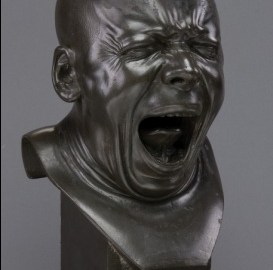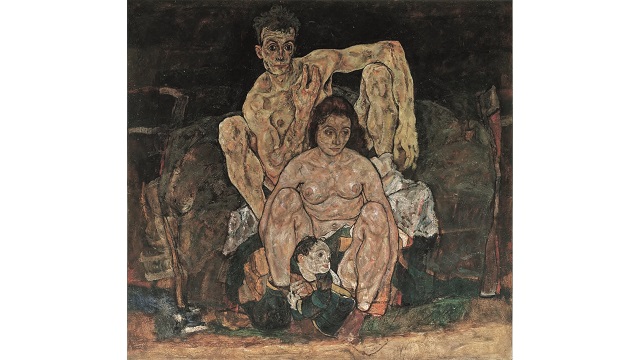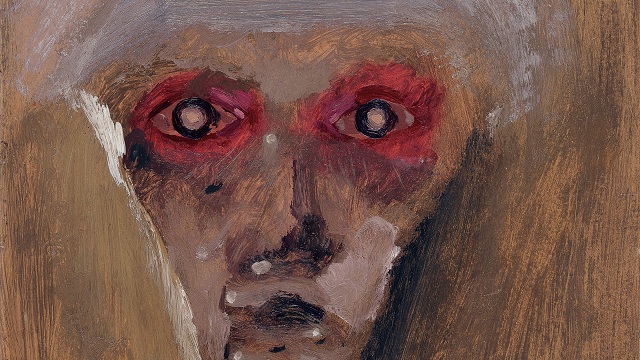A Method to His Madness: Franz Xaver Messerschmidt

“Though this be madness, yet there is method in’t,” Polonius says in Act 2 of Shakespeare’s Hamlet after an exchange with the title character. After encountering the unique sculpture of Franz Xaver Messerschmidt, you can’t help but feel the same way. In Franz Xavier Messerschmidt 1736-1783: From Neoclassicism to Expressionism at the Neue Galerie, the tragically underexposed tragic artist gets the attention of the American public for the first time. A successful portraitist of the nobility and the rich, Messerschmidt suffered some kind of breakdown in 1771 that left him reeling. He found some kind of anchor in a series of “character heads” modeled after his own appearance that served as talismans against the demons he felt chasing him. That haunted feeling makes Messerschmidt’s eighteenth-century art seem remarkably modern—a study of demonology that set a precedent for the demons to come in the twentieth century.
“In 1771 there must have been a strange rupture in Messerschmidt’s life,” Maria Pötzl-Malikova writes in the catalogue to the exhibition, “to which those around him reacted with rejection: there were no commissions and the artist became isolated.” Where once Maria Theresa of Austria, Joseph II, Holy Roman Emperor, and even Franz Anton Mesmer stood for sculpted portraits, such opportunities disappeared along with, apparently, Messerschmidt’s sanity. In his isolation, Messerschmidt began sculpting a series of works known after his death as “character heads.” “In Messerschmidt’s view,” Pötzl-Malikova explains, “proportions controlled the entire world and also influenced one another.” By distorting the proportions of his own face, which he studied in a mirror as he sculpted each work, “[h]e believed that he could thus alter the proportions of his face in a way that would enable him to master the spirits torturing him.” Each sculpture thus “preserve[d] the magical effect of his grimaces and protect[ed] their creator from overpowering dangers.” Messerschmidt’s magic realism born of his amazing technique fulfilled a real (for him) life or death purpose.
After Messerschmidt’s death in 1783, his “character heads,” which had attracted a kind of cult following during his lifetime, went before the public with titles given by an anonymous author. We don’t know what Messerschmidt would have called them or in what order they were made, so any labels or chronologies are pure speculation. All we have to resort to are our own eyes. In the eyes of that nineteenth century author, one head with a highly detailed open mouth’s interior suggested the title The Yawner (shown above). To modern eyes, including those of critics, the expression seems more a scream of pain than a yawn. Messerschmidt’s works straddle the divide of those different sensibilities.
Like William Blake and others, Pötzl-Malikova suggests, Messerschmidt strove to “liberate the antirational artistic themes from the shackles of the centuries-old tradition” as part of the larger “intellectual emancipation of humanity in the late Enlightenment.” This heroic element, especially in the face of real psychological pain, elevates Messerschmidt’s art beyond just one time and one place. Antonia Boström explains in her essay how Messerschmidt’s sculptures, long considered merely fascinating curiosities, found a whole new audience in the Vienna Secession at the turn of the twentieth century. That influence, begun more than a century after Messerschmidt’s death, spawned this exhibition at the Neue Galerie, which dedicates itself to the development of German art in the twentieth century. Messerschmidt the misplaced modern, born before his time, found easy company with the Freudian-thinking collectors and artists of Vienna.
And, yet, a work by Messerschmidt sold for a few hundred dollars in Los Angeles as recently as 1972—a perfect illustration of just how unknown he was and still is in America. It’s too easy to see these works as the products of a damaged mind and little else. The workmanship and detail show the painstaking methods Messerschmidt used to achieve his desired effects. Each work is a self-portrait of sorts, rendering the exact expression but not necessarily the artist’s own exact features. To see the artist himself, we must look at the works as a whole and experience the anguish he felt. Some comic, some terrible, some sublime—these “character heads” hint at Messerschmidt’s complex character as a kindred spirit of the modern condition. Yes, this is madness, but the method in it, and the liberating humanism behind it, make Franz Xavier Messerschmidt 1736-1783: From Neoclassicism to Expressionism anything but a yawner.
[Image: Franz Xaver Messerschmidt (1736–1783). The Yawner, 1771–81. Tin cast. H. 43 x W. 22 x D. 24 cm (16 1/2 x 8 5/8 x 9 1/2 in.). Szépmuvészeti Múzeum (Museum of Fine Arts), Budapest.]
[Many thanks to the Neue Galerie for providing me with the image above and a review copy of the catalogue to the exhibition Franz Xavier Messerschmidt 1736-1783: From Neoclassicism to Expressionism, which runs through January 10, 2011.]





